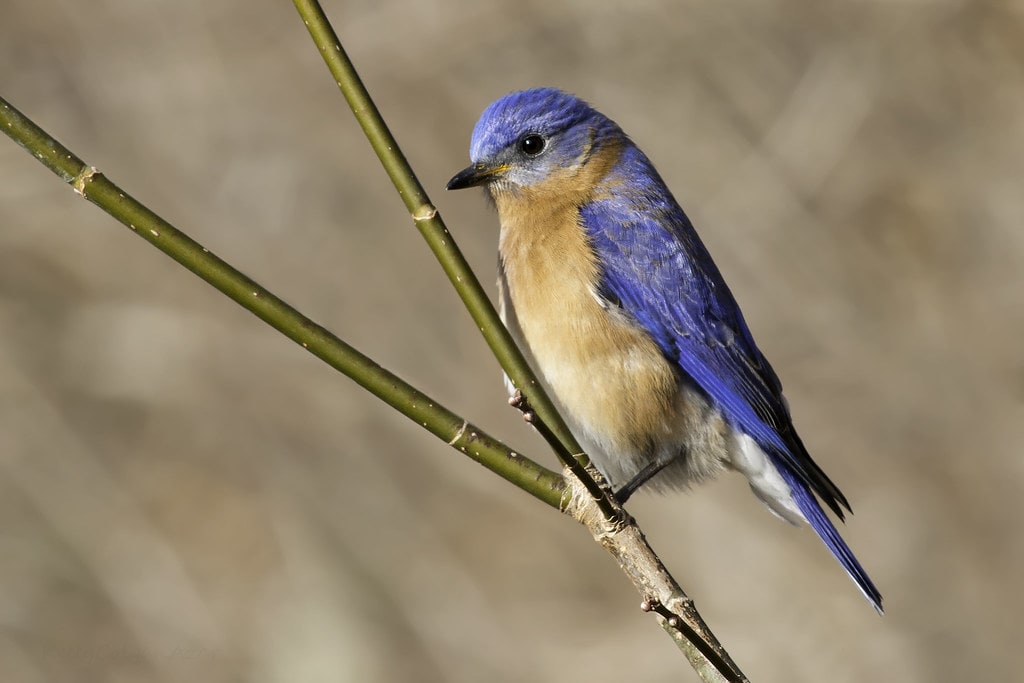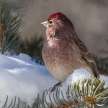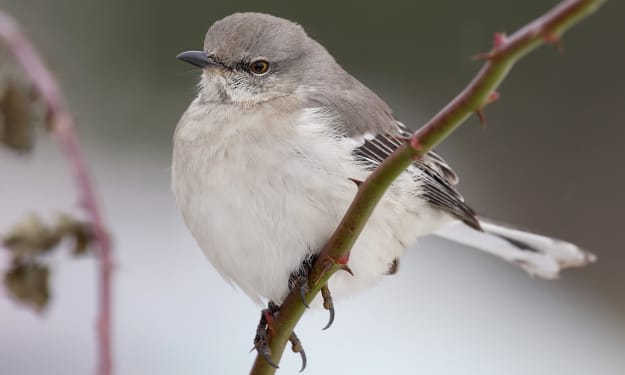
The eastern bluebird (Sialia sialis) is a small thrush in open woodland, fields, and orchards. It is the Official bird of Missouri, and New York. It measures in length 16–21 cm, extends 25–32 cm around the legs, and weights 27–34 g. Eastern bluebirds are found east of the Rockies, southern Canada in the Gulf states, and southeastern Arizona in Nicaragua. Due to the suppression of fire and tree planting, the increase in trees in the Great Plains over the last century permitted the expansion of the western range of the eastern bluebird as well as the expansion of several other bird species. From 1966-2015, with the exception of southern Florida and the Ohio River Valley, the eastern bluebird reported an average population increase of more than 1.5 per cent in most of its breeding and year-round range. The vivid blue plumage of the male breeding, readily evident on a wire or open perch, makes this species a favourite birders. Calling the male also entails soft ' jeew ' or ' chir-wi ' warbles or the ' chiti wewidoo ' melodic poem. About 2/3 of an adult diet is composed of insects and other invertebrates. Most of the bird's diet is from wild seeds, or berries. Favored insect species include grasshoppers, crickets, katydids, and beets. Many types of food include earthworms, spiders, millipedes, centipedes, bugs for sowing and snails. In winter, fruits are of special interest as insects become scarce. My favourite winter food styles include dogwood, hawthorn, wild grape, sumac, and hackberry seed. In comparison, black raspberries, bayberries, honeysuckle fruit, Virginia creeper, eastern juniper, and pokeberries are also eaten. Bluebirds eat and dive down to capture insects on or near land by perching at a high point, such as a tree or fence post. A supply of winter food will also determine whether a bird is migrating or not. If bluebirds live in a field for the winter, they join together and seek shelter in heavy thickets, orchards, or other areas where adequate food and resource shelter is available. Often they gather in flocks of 100 or more. They are however territorial during the breeding season and may tend to defend a feeding area throughout the winter. Mating occurs in the summer and in the spring. A mature female usually raises two broods each season. Nests are installed within empty woodpecker holes or other cavities to provide sufficient treeline protection. The nest building is mostly done by the female, and the completion takes about 10 days. Such nests are small structures, cuplike, grass-lined, feathers, roots, and hairs. Growing female lays three to seven light-blue or white eggs, at times. The female incubates the larvae, which hatch after 13 to 16 days. The youths can't think for themselves after hatching. Upon hatching the female raises the chicks for up to seven days. Upon hatching for 15 to 20 days the fledglings then leave the nest. Both parents work closely to raise the young, who they feed on an almost entirely insect-consisting diet. A lot of young people are staying in the nest, helping raise another generation. The fledglings are greyish in colour, with dotted breasts. The colour blue becomes even more common, and the speckles on their breasts fade as they age. After hatching, bluebirds begin reproducing the season. Eastern bluebirds tend to live in open fields with trees, but with a limited understory and sparse soil cover. The original habitats were perhaps open, frequently burning pine savannas, beaver ponds, thick and open forest and trees openings. Today, they are most common in pastures, agricultural areas, suburban parks, backyards and even golf courses. This species also occurs in eastern North America as well as the south of Nicaragua. Birds living farther north and west of the range tend to lay more eggs in the east and south than the others.
About the Creator
MB
I am a bird aficionado and really enjoy spotting them them on hikes. I greatly appreciate the variety of birds cross North America and the world. They are amazing and intelligent creatures, each so unique and with a wonderful life.






Comments
There are no comments for this story
Be the first to respond and start the conversation.